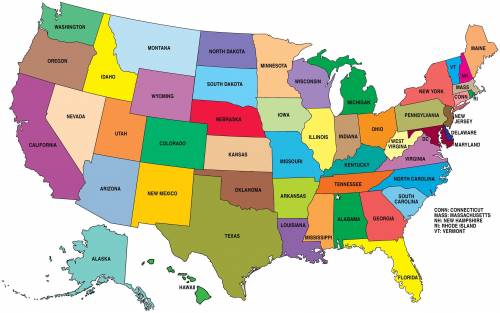
100 points Use the U. S. Weather Maps provided. Label the maps using the appropriate weather symbols. 1. Draw locations of fronts using the symbols you learned in this module. 2. Use H and L and isobar lines to show high-and low-pressure areas of air. 3. Use green to show areas of precipitation. 4. Use red to show warm air masses and blue to show cold air masses. Create the first map for July 4, 2006. Plot the temperature conditions. There are extremely hot temperatures across the United States. It is at least 90 degrees in all parts of the southeast from Virginia to Florida all the way to Texas. Nevada and Arizona are also in the 90s. The rest of the country, including California, is in the 80s with a few locations in northern Maine in the 70s. Plot the air masses and fronts reported for July 4, 2006: A warm front is moving out of the northeast around Massachusetts. A cold air mass that stretches from Michigan through Kansas and into Texas is moving east. These air masses are producing an occluded front in Canada. Plot the air masses and fronts reported for July 4, 2006: Behind the cold air mass are lower temperatures and a region of high pressure through North Dakota, South Dakota, and Montana down to Colorado. Near Washington state is a region of low pressure, and behind it, a cold air front. Plot the precipitation reported for July 4, 2006: Rain is moving along the lines of the cold front. More rain is behind the region of high pressure, moving east out of California.


Answers: 3


Another question on Biology

Biology, 22.06.2019 00:00
How do diseases caused by bacteria and diseases caused by viruses react to antibiotics?
Answers: 1


Biology, 22.06.2019 02:00
The pharynx is the structure in the body that serves as a pathway of both air and food. how does the body make sure that food does not get into the lungs? the salivary glands secrete enzymes that pull food out of the air pathway. the small intestine pushes the air out of the digestive system. the pancreas breaks down food in the air pathway. the epiglottis closes the air pathway so that food will not enter it.
Answers: 1

Biology, 22.06.2019 08:00
Two students are working together on an experiment that measures the effect of different liquid fertilizers on the thickness of plants’ stems. which is most likely to result in the greatest amount of error in their scientific experiment? a.one student measures the plant stem widths by using calipers. the other student measures the widths of the same plant stems again by using a different pair of calipers. b.one student measures the plant stem widths by using calipers. the other student types the measurements as they are taken into a computer spreadsheet. c.one student weighs liquids for the experiment by using a calibrated scale. the other student weighs liquids for the experiment by using a different calibrated scale.
Answers: 1
You know the right answer?
100 points Use the U. S. Weather Maps provided. Label the maps using the appropriate weather symbols...
Questions

Mathematics, 09.12.2020 14:00

Biology, 09.12.2020 14:00

Mathematics, 09.12.2020 14:00


Mathematics, 09.12.2020 14:00

Biology, 09.12.2020 14:00

Biology, 09.12.2020 14:00

Mathematics, 09.12.2020 14:00

Mathematics, 09.12.2020 14:00

History, 09.12.2020 14:00

Geography, 09.12.2020 14:00

Mathematics, 09.12.2020 14:00

Mathematics, 09.12.2020 14:00

Health, 09.12.2020 14:00

Social Studies, 09.12.2020 14:00

Mathematics, 09.12.2020 14:00


Geography, 09.12.2020 14:00





